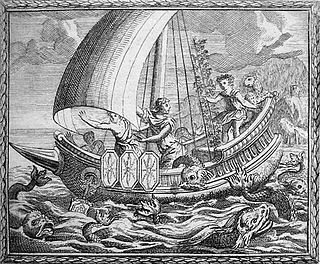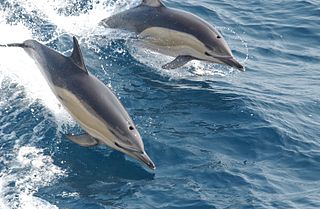 W
WDolphin is a common name of aquatic mammals within the infraorder Cetacea. The term dolphin usually refers to the extant families Delphinidae, Platanistidae, Iniidae, and Pontoporiidae, and the extinct Lipotidae. There are 40 extant species named as dolphins.
 W
WIn Greek mythology, Acoetes was the fisherman known for helping the god Bacchus.
 W
WAdelaide Dolphin Sanctuary is a marine protected area in the Australian state of South Australia located on the east coast of Gulf St Vincent in and adjoining the north-western part of the Adelaide metropolitan area and which was established in 2005 for the protection of a resident population of Indo-Pacific bottlenose dolphins .
 W
WDelphibacteria is a candidate bacterial phylum in the FCB group. The phylum was first proposed after analysis of two genomes from the mouths of two bottlenose dolphins. "Dephibacteria" was proposed in recognition of the first genomic representatives having been recovered from the dolphin mouth. Members of the Delphibacteria phylum have been retroactively detected in a variety of environments.
 W
WThe common dolphin is the most abundant cetacean in the world, with a global population of about six million. Despite this fact, the common dolphin is not thought of as the archetypal dolphin, with that distinction belonging to the bottlenose dolphin due to its popular appearances in aquaria and the media. However, the common dolphin is often depicted in Ancient Greek and Roman art and culture, most notably in a mural painted by the Greek Minoan civilization.
 W
WGray's Paradox is a paradox posed in 1936 by British zoologist Sir James Gray. The paradox was to figure out how dolphins can obtain such high speeds and accelerations with what appears to be a small muscle mass. Gray made an estimate of the power a dolphin could exert based on its physiology, and concluded the power was insufficient to overcome the drag forces in water. He hypothesized that Dolphin's skin must have special anti-drag properties.
 W
WParapontoporia is an extinct genus of dolphin that lived off the Californian coast from the Late Miocene until the genus' extinction during the Pliocene.It is related to the possibly extinct Baiji.
 W
WPlatanistidae is a family of river dolphins containing the extant South Asian river dolphin but also extinct relatives from marine deposits in the Neogene.
 W
WA signature whistle is a learned, individually distinctive whistle type in a bottlenose dolphin's acoustic repertoire that gives the identity of the whistle owner. The whistles are identified and studied in the wild or in captivity by researchers using hydrophones. Vocal learning strongly influences the development of signature whistles, which can remain stable for up to at least 12 years. More often than not, calves develop signature whistles by the sounds they hear while making sure that they differ from close associates. However, male calves tend to learn signature whistles that resemble their mother's. They are believed to be most frequently used in communication of captive bottlenose dolphins, along with having specialized functions and properties. Researchers define it as a whistle with a unique frequency curve that dominates in the repertoire of a dolphin. Each dolphin has a distinct signature whistle that other members of its social group use to individually identify the whistler. They are typically used for localisation purposes, however they also provide dolphins with behavioural context. Signature whistles also play an important role in group cohesion and social interaction.